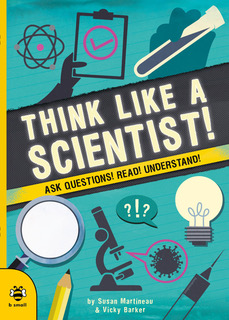Spotting Fake News by Susan Martineau
Susan Martineau has written several non-fiction books for b small publishing, all illustrated by Vicky Barker. They encourage young readers to think about and question what they are reading – the first steps to developing critical literacy skills. They are also full of fascinating and entertaining facts. Real-Life Mysteries (2017) won the Blue Peter Award for the Best Book with Facts in 2018. Read on to find out how children can become fact detectives and successfully navigate the information jungle.
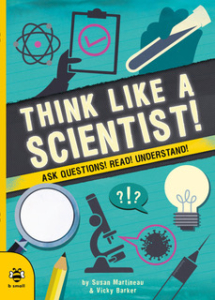
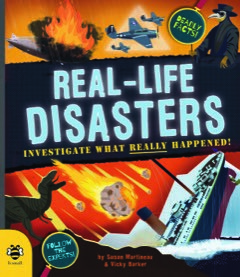
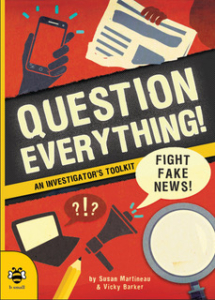
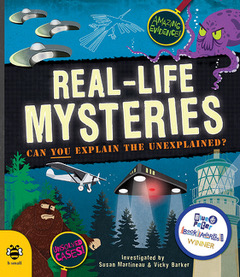
SPOTTING FAKE NEWS by Susan Martineau
Every day we are bombarded with words and images. How can young readers and viewers disentangle the facts they need to know from this overwhelming jungle of information?
In 2018, the National Literacy Trust concluded that … ‘only 2% of children and young people in the UK have the critical literacy skills they need to tell whether a news story is real or fake …’
As a children’s information book writer, I am obsessed with finding out accurate facts. I cannot remember a time when I didn’t love learning about the world around me and then enlightening anyone within earshot about my latest discovery, from how long a baby elephant stays with its mother to why you can’t pee into a normal loo in space.
But when I was a young fact-finder, we did not have the internet in all its complexity. Being able to research online is the most amazing tool, but it requires certain skills to avoid the traps that lie in wait in its undergrowth. It is tricky enough for hardened non-fiction writers to sift fact from tosh, or even downright dangerous misinformation, so how can we expect young readers to manage it?
The last thing anyone wants is for children to be put off questing for facts, because they are anxious about what they might read or view? How sad if their curiosity about the world is squished before it can take off. However, if they acquire some essential critical literacy skills, they can become discerning and confident explorers. LOOKING, READING, ASKING QUESTIONS, LISTENING, CHECKING FACTS and THINKING FOR YOURSELF are not superpowers, but they do need to be practised.
I’m sure I’m not alone in feeling just a bit sick of the term ‘fake news’. The trouble with this nastily tidy little phrase is its use as an indiscriminate accusation against anything someone does not agree with. Just shout ‘fake news’ as loudly as you can, encourage others to share it, and fear, anger and confusion spreads. Is this a message we want our children to soak up? They need to understand what fake news is really all about and how to spot it.
Young readers and viewers can be encouraged to become fake-news spotters, armed with the following questions: WHO is writing this news? Are they an expert on the subject or were they there when it happened? WHY are they writing it? How are they trying to make you feel or act? WHEN was it written? Is it old news made to look new? Using their critical literacy skills young readers will learn to see behind the words on the page or screen.
But critical literacy is not just about fake news, it is also about analysing what you are reading to construct a logical picture of the world and the facts that are needed for problem-solving. For example, how can children learn about and discuss the urgent issue of climate change without accurate facts? Non-fiction that really gets readers to engage and think about the facts for themselves is essential.
In my Real-life series I’ve examined mysteries and disasters. In each book, I’ve told the stories of the mysteries or disasters and then created a kind of investigator’s file for each one. These ‘mystery case files’ and ‘disaster dossiers’ are a way of vividly presenting the facts to the reader for them to think for themselves about what really happened. I researched high and low to find out as much as I could and, in the companion book Question Everything!, I have set out my tips on how to find reliable sources of information. Every child can be a fact detective!
The pandemic has brought the need for factual information we can rely on into even sharper focus. In addition, there seems to have been an ever-increasing mistrust of experts out there in the Wild West of social media. I researched and wrote my latest book, Think Like a Scientist!, during this dreadful time as I felt it was so important for young readers to understand how scientists do their work and the questions they ask.
Children are braver than we think. We do not help them if we make them afraid or suspicious of the world, because we have become so wary ourselves. The more they flex their critical reading muscles and open their minds the better they will be at finding their path through the jungle. They are our fact-finders, experts, leaders and writers of the future. Let them take the power back to think for themselves.
Visit https://bsmall.co.uk to find out more about more about Real-Life Disasters, Real-Life Mysteries, Question Everything and Think Like a Scientist; and for the downloadable related resources.
A version of this article originally appeared in a piece entitled NAVIGATING THE INFORMATION JUNGLE in Books For Keeps Magazine, No 243, July 2020.

